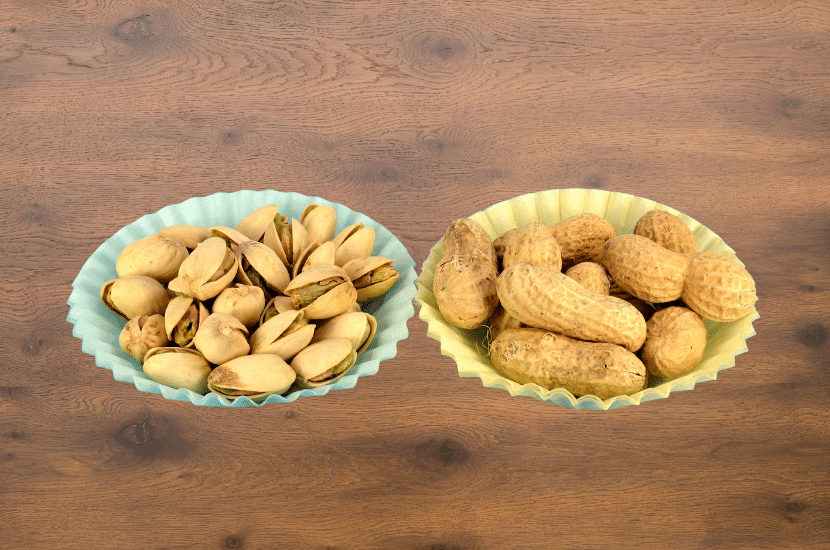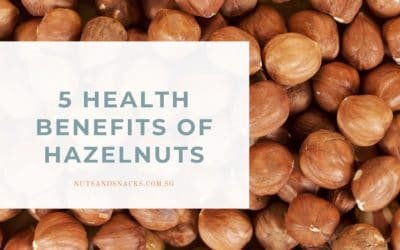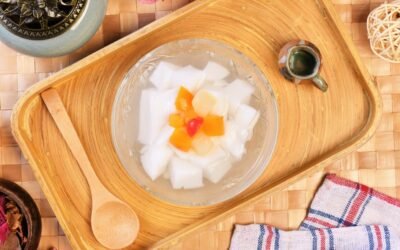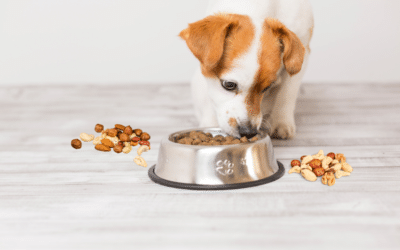
Best Type Of Nuts: Peanuts Or Pistachios?
Peanuts and pistachios are commonly eaten during Chinese New Year. What are the differences in their nutritional benefits and uses? Read on to find out more in this article.
Peanuts
Peanuts are one of the most eaten nuts. They are also a favourite during Chinese New Year, as they represent longevity and life. They contain many nutrients and minerals such as niacin, folate, vitamin E, biotin, phosphorous, copper, manganese, magnesium, and thiamin.
100 g of peanuts contain:
Protein: 25.8 g
Fat: 49.24 g
Carbohydrates: 16.13 g
Fiber: 8.5 g
Sugar: 4.72 g
Phosphorous: 481 mg
Calcium: 269 mg
Vitamin E: 25.63 mg
Potassium: 733 mg
Magnesium: 270 mg
Iron: 3.71 mg
Vitamin B6: 0.3 mg
Pistachio nuts
Pistachio nuts have had a long history; they are said to have existed 7000 BC and are one of the few nuts with low calories. They are a common sight during the festive season as they represent joy. Pistachio nuts are actually seeds of the pistachio tree, however, they are called nuts as they do not look like seeds, but nuts. Pistachio nuts are full of potassium and vitamin B6. They may also lower cholesterol levels and reduce the risk of developing heart illness due to the high amounts of antioxidants present that lowers oxidative stress.
100 g of pistachio nuts contain:
Protein: 20.16 g
Fat: 45.32 g
Carbohydrates: 27.17 g
Fiber: 10.6g
Sugar: 7.66 g
Phosphorous: 490 mg
Calcium: 105 mg
Potassium: 1025 mg
Magnesium: 121 mg
Iron: 3.92 mg
Vitamin B6: 1.7 mg
Differences:
Peanuts
From the nutritional information, we can see that peanuts are good sources of fats and protein, and they have high amounts of them compared to pistachios. Although peanuts have slightly more fats than pistachios, these fats are monounsaturated and polyunsaturated fats, which are the healthy types of fats. According to American Heart Association, these types of fats may reduce cholesterol levels, which helps to reduce the risk of developing heart illnesses and stroke. As for protein, protein is needed to repair cells and tissues, as well as to strengthen bones and muscles. Hence, protein needed, especially for the development of children.
However, peanuts are high in calories but lower in total carbohydrates. Peanuts have higher calories of 567 per 100 g while pistachios have 560 calories per 100 g. Peanuts having low carbohydrates means that people with diabetics can consume them as they do not spike blood sugar levels.
Peanuts also contain more magnesium and iron. Magnesium is needed for muscle and nerve functions, while iron is needed to produce hemoglobin, a protein found in red blood cells to ensure that they can transport oxygen throughout the body.
In addition to the benefits of peanuts listed above, peanuts may also reduce the risk of developing heart illness and gallstones. Peanuts may help to reduce gallstones as they are related to lowering cholesterol levels.
Pistachio nuts
As for pistachios, they contain a substantial amount of potassium compared to peanuts. Potassium lowers the risk of developing heart illness, helps to protect muscle mass in the aged, and maintains the density of bones.
Pistachio nuts also contain more than five times more the amount of vitamin B6 than peanuts. Vitamin B6 is needed to produce hemoglobin, and it helps to produce hormones that regulates mood and stress levels. Together with folate and vitamin B12, vitamin B6 may reduce the risk of developing Alzheimer’s disease, memory loss and the slowing down of cognitive functions. A serving of pistachios provides about 37% of the daily required intake of 1.3 mg of vitamin B6.
In addition to the benefits mentioned above, pistachios prevent eye diseases, constipation and promote the growth of good bacteria in the gut. They also help to reduce the risk of developing colon cancer and they make for healthy snacks that do not spike blood sugar levels for those with diabetes.
Uses
Pistachio nuts can be eaten as a snack on its own, as the Chinese enjoy eating them and peeling the shells off while conversing with friends and relatives during Chinese New Year. The Italians also commonly add chopped pistachios into their pastas or grind them to make pesto sauces. You may also try out our pistachio nut cookie recipe for a simple and delicious way to use them. Lastly, you can also make pistachio butter as a spread for your bread, crepes and as pastry fillings.
Peanuts are great for snacking and they come in a variety of flavours, such as seaweed coated peanuts, honey roast peanuts and sugar-coated peanuts. They can be processed to make peanut butter which are perfect for a breakfast bread spread to keep you energized throughout the day or be made into a peanut butter flavoured smoothie. You can also chop them up and sprinkle them over your cakes or soups for an added crunch. Not to forget, peanuts are also used locally to make peanut satay sauce.
Conclusion
All in all, peanuts and pistachios have their different health benefits. The nut to choose depends on your nutritional needs and the ways you intend to use them for. Get your nuts from nustandsnacks.sg as they are affordably priced, and quality is assured!






